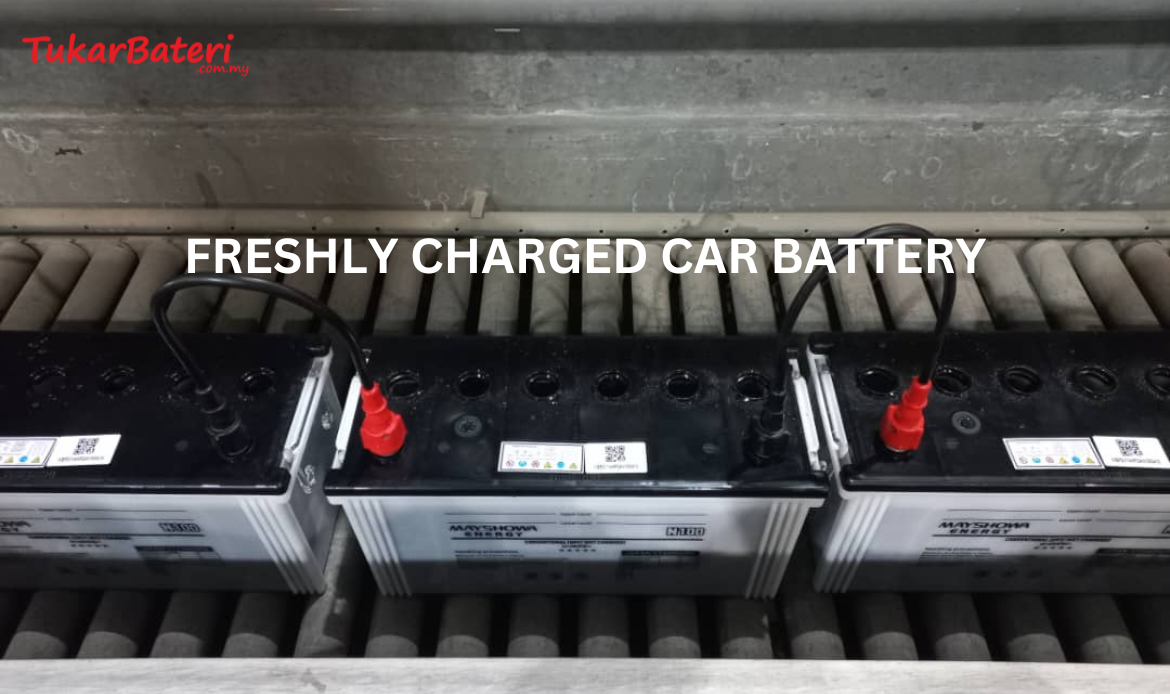A freshly charged battery refers to a rechargeable energy storage device that has recently undergone the charging process and is now at its full capacity to deliver electrical energy for various applications. These batteries are essential components in numerous modern devices and technologies, powering everything from smartphones and laptops to electric vehicles and renewable energy systems.
The concept of a freshly charged battery revolves around electrochemistry, which involves converting chemical energy into electrical energy and vice versa. Rechargeable batteries, also known as secondary batteries, stand in contrast to primary batteries, which are non-rechargeable and are discarded once depleted. Freshly charged batteries are characterized by their ability to store and release electrical energy repeatedly, making them a more sustainable and cost-effective option in the long run.
To comprehend the significance of freshly charged batteries fully, one must delve into their history, construction, working principles, charging processes, types, applications, and advancements in the field. This essay will explore these aspects to comprehensively understand the role and importance of freshly charged batteries in modern society.
1. Historical Evolution of Batteries:
The history of batteries dates back several centuries. The initial discoveries, such as the Baghdad Battery from ancient Mesopotamia, were simple electrochemical cells that demonstrated the basic principles of energy conversion. However, significant progress was made in the 19th and 20th centuries, with pioneers like Alessandro Volta, who invented the first true chemical battery, the Voltaic Pile, in 1800. This paved the way for further developments, leading to the creation of lead-acid batteries, nickel-cadmium batteries, and eventually the more advanced lithium-ion batteries, which dominate the rechargeable battery market today.
2. Battery Construction and Components:
The construction of a rechargeable battery involves assembling specific components into a carefully engineered package. The key components include:
Electrodes: A battery typically consists of two electrodes – an anode and a cathode – made from different materials with varying chemical properties. These materials influence the battery’s performance, capacity, and charging rate.
Electrolyte: The electrodes are separated by an electrolyte, which serves as a medium for the flow of ions during the charging and discharging processes. The electrolyte’s composition determines the battery’s chemical reaction and safety.
Separator: The separator is a porous material that keeps the electrodes from coming into direct contact, preventing short circuits while allowing the movement of ions.
Current Collectors: These conductive materials collect the flow of electrons generated during the battery’s operation and direct them to the external circuit.
3. Working Principles of Rechargeable Batteries:
Rechargeable batteries’ charging and discharging processes are based on redox reactions, where chemical species undergo reduction and oxidation. During charging, electrical energy is supplied to the battery, causing the anode material to release ions, which travel through the electrolyte to the cathode. This creates a chemical transformation that stores electrical energy in the form of chemical potential energy.
When the battery is used to power a device, the discharge process occurs in reverse. The ions flow from the anode to the cathode through the external circuit, releasing the stored energy as electrical power. This continuous cycle of charging and discharging enables the battery to be reused multiple times.
4. Charging Processes and Consideration:
The process of charging a battery is crucial to ensure its efficiency, safety, and longevity. Depending on the type of battery, the charging method can differ. Some of the common charging methods include constant current charging, constant voltage charging, trickle charging, and pulse charging.
Proper charging practices are essential to avoid overcharging, which can lead to degradation, reduced capacity, and, in extreme cases, safety hazards like leakage, overheating, or even explosion. Modern battery management systems have been developed to regulate the charging process, ensuring optimal performance, and extending the battery’s lifespan.
5. Types of Rechargeable Batteries:
There are several types of rechargeable batteries, each with its unique characteristics and applications. Some of the prominent types include:
Lead-Acid Batteries: These are one of the oldest and most common rechargeable battery types. They find extensive use in automotive applications, uninterruptible power supply (UPS) systems, and renewable energy storage.
Nickel-Cadmium (Ni-Cd) Batteries: Ni-Cd batteries were once widely used but have largely been replaced by newer technologies due to their toxic cadmium content.
Nickel-Metal Hydride (Ni-MH) Batteries: Ni-MH batteries offer higher energy density than Ni-Cd batteries and are commonly used in portable electronics.
Lithium-Ion (Li-ion) Batteries: Li-ion batteries have become the dominant rechargeable battery type, powering numerous devices and applications. They offer high energy density, lighter weight, and no memory effect.
Lithium-Polymer (Li-Po) Batteries: Li-Po batteries are a variation of Li-ion batteries with a different electrolyte, offering greater flexibility in shape and size for specific applications.
Sodium-Ion Batteries: Sodium-ion batteries are being researched as an alternative to lithium-ion batteries, with potential applications in large-scale energy storage.
6. Applications of Freshly Charged Batteries:
Freshly charged batteries have revolutionized numerous industries and are integral to our daily lives. Some of the key applications include:
Consumer Electronics: Smartphones, laptops, tablets, cameras, and other portable devices rely on rechargeable batteries for their portability and convenience.
Electric Vehicles (EVs): The shift towards sustainable transportation has been facilitated by the development of high-capacity rechargeable batteries, enabling the widespread adoption of electric cars and buses.
Renewable Energy Storage: Freshly charged batteries play a vital role in storing energy generated from renewable sources like solar and wind, making it available during periods of low generation or high demand.
Grid Stabilization: Batteries are increasingly used to balance the electrical grid by absorbing excess energy during times of low demand and releasing it when demand is high.
Aerospace and Aviation: Rechargeable batteries are used in space missions, satellites, and electric aircraft, enhancing their efficiency and reducing environmental impact.
Medical Devices: Implantable medical devices, as well as portable medical equipment, rely on rechargeable batteries for their power source.
7. Advancements and Future Prospects:
The field of rechargeable batteries is continuously evolving, driven by research and development efforts to enhance their performance, safety, and sustainability. Some of the current trends and advancements include:
Solid-State Batteries: Solid-state batteries promise higher energy density, improved safety, and longer lifespan compared to traditional liquid electrolyte batteries.
Graphene and Nanotechnology: The integration of graphene and nanomaterials is showing promise in increasing the efficiency and capacity of rechargeable batteries.
Recycling and Sustainability: Efforts to recycle and repurpose battery materials are becoming increasingly important to mitigate environmental impacts.
Fast Charging and Wireless Charging: Researchers are exploring faster and wireless charging technologies to enhance the convenience and usability of rechargeable batteries.
Generally, freshly charged batteries play a pivotal role in powering the modern world. Their ability to store and release electrical energy repeatedly makes them indispensable in various applications, from portable electronics to electric vehicles and renewable energy storage. Over the years, significant advancements in battery technology have led to safer, more efficient, and environmentally friendly options. The future of rechargeable batteries looks promising, with ongoing research focused on developing even more innovative and sustainable energy storage solutions.


